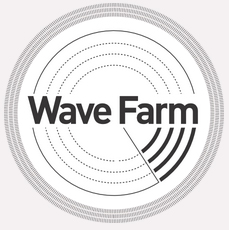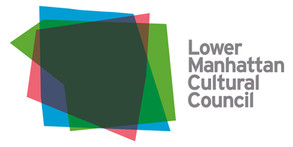LoVid: Creative Process
- Oct 5, 2014
- 6 min read
Updated: Jul 1, 2020

LoVid’s “iParade” is part of “The Artist’s Creative Process” series, produced by curator Xiaoying Juliette Yuan, that explores the practice of internationally known artists who reveal their creative process step by step and the relationship between their lives and their art. Other artists in the series include John F. Simon, Jr. and Stephanie Rothenberg.
OVERVIEW LoVid’s “iParade” series uses technology to uncover the energies flowing between the past, present and future. LoVid, the art duo of Kyle Lapidus and Tali Hinkis, intersects technology, including synthesizers they build, with traditional non-electronic media such as textile, patchwork, ceramic, paper, collage, painting, and sculpture. iParade is a series that explores the relationships between personal and communal memories, architectural and public spaces. These projects are created and distributed as smartphone Apps.
[Image above: LoVid during a residency at Signal Culture, Owego, NY. Photo by Debora Bernagozzi]
PROCESS
iParade is a series of locative experimental media-works distributed as a smartphone App. iParade uses GPS data and includes video, sound, and texts that are accessible only in specific geographic locations. The content is inspired by, and recorded in the same locations, such as a street, a building, or a city park. To watch the work in full, visitors need to physically relocate themselves to access uploaded segments that are linked to each particular location. iParade renews viewers’ appreciation of their physical environment by providing a unique perspective into physical and virtual public spaces.
IPARADE 1, 2 iParade 1: Rocks That Look Like Rows Of Trees
“Rocks That Look Like Rows Of Trees” focuses on observing the mundane and drawing meaning from small interactions and discoveries. It was created and is located in various places on Weehawken Street, a quiet street in the West Village in New York City, with nearly forgotten history. The text and video in the work evoke a haunting and mysterious feeling. They also reflect on our process of interaction and intimate relationship with technological objects.
The project was supported by LMCC’s Manhattan Community Arts Fund, and built on the ARIS platform. Video, sound and text by LoVid. Programming by Ron Rosenman. Narration for documentation by Shannon Anastasia and Steve Schitz. Special thanks to: David Gagnon, Sabine Gruffat, Anthony Saunders, and all the participants in this documentation. . iParade 2: Unchanged When Exhumed
“Unchanged When Exhumed” explores relationships between human memory and physical places, as well as displaced memories and technology. This work is inspired by the historic relocations of Hamilton Grange. Additional inspiration comes from an archive of student films from the 1940s and 1950s. These films were produced as part of the Film Institute at New York City College under the direction of the artist and filmmaker Hans Richter. The piece takes place in Hamilton Heights, a neighborhood in West Harlem, New York City.
IPARADE 3 - WORK IN PROGRESS “Disintegrative Fabrication” is a work-in-progress that will premiere in September 2015. . RESEARCH
The work explores the urban setting, history and energy of Troy, New York.The artists interpret and investigate the ways in which the city and its culture have evolved and transformed from the industrial era to the post-industrial and current technological era; they speculate on the relationship between biology and technology. The collar industry was chosen as a clear example of the history of a profession, dominated by female workers in the 1950s, that combined handmade production and technological developments for DIY culture, including innovative tools and systems.



Troy Collar workers at Cluett Peabody & Co. Photos Courtesy of Rensselaer County Historical Society.
“The Origin of Neckties” by fashion historian Chloe Chapin chloechapin.com
Interview with historian Kathy Sheenan, Rensselaer County Historical Society .

Map of Troy, NY, marked with sites included in iParade #3: Disintegrative Fabrication .
SKETCHES




Video experimentation for iParade Troy
PROPS
The finished work will navigate through a series of visual experiments. Archival and digital photos, ink drawings, the study of male neckties, a site map, video samples, and raw interview footage coalesce to reveal a unique electronic aesthetic that revitalizes people’s memory and thinking about Troy.


EDITING


LoVid at Signal Culture studio, photo by Debora Bernagozzi
TECHNOLOGY
Though we are interested in technology and how it might affect the development of culture and humanity, we are also concerned with our society’s obsession with “new” technology. This obviously effects how media art is viewed and produced. Our concern is that the work can easily become valued or categorised simply by its technique/process rather than the content. Aside from simple concerns over how it will be possible to view this work in the future, we also wonder what will be left to see. On the other hand, we are particularly interested in tools and the inherent fragility of physical technology. As a result, we are not tied to having people see what was originally intended.
We are interested in the translation of ideas from one medium to another and are particularly inspired by interconverting between ephemeral media and physical materials. To explore the idea of a parallel world where media is physical and organic, we make objects that we envision as relics from another civilization’s flow of media. We imagine that these migrate from that world into our own, resulting in forms that are very layered, textured, and awkward.
[From interview by Jason Huff, Rhizome. Read more here.]

Glimps Avatars from NEAR=FAR (So Near and Yet So Far Away) by LoVid for Futuresonic 2007.
LOVID

More of the Same. Website here. . Tali Hinkis is an artist and media teaching artist. She studied art at the Ecole des Beaux-Arts in Paris. Kyle Lapidus is a physician-scientist in addition to his work with LoVid. He studied neurobiology and electronic music as an undergraduate at Harvard, and then received his MD and PhD from Albert Einstein College of Medicine.
LoVid’s interdisciplinary works explore the often invisible or intangible aspects of contemporary society, such as communication systems and biological signals. We are particularly interested in the ways technology seeps into the evolution of human culture.

Image from Paper Performance . Our practice includes performances, participatory public art, handmade technologies, textiles, prints, App-art, experimental video, and immersive installations. We focus on the juxtaposition of media with physical objects, geographic spaces, and the human touch. We are interested in bridging between handmade engineering and traditional art or craft forms by using a DIY philosophy and aesthetic. This allows us to reflect on the role of handmade production and the physical gesture of art making in a time increasingly dominated by machines and virtual experiences. As a complementary part of our practice, we also apply machine-based and digital fabrication techniques that highlight our view of the critical importance of human/machine interaction in the digital age. Our diverse practice invokes processes and ideas from art, science, and technology, to question perceptions of time, place, and the self in the networked era.

LoVid’s VideoWear performance, collage by Brian Alfred . LoVid’s collaboration began with audiovisual performances and has expanded to include a wide range of media, from prints to App-Art. LoVid’s performances were presented at Museum of the Moving Image (NY), Graham Foundation (Chicago), Eyebeam (NY), MoMA (NY), FACT (UK), PS1 (NY) and The Kitchen (NY), among many others.

Video still from iParade#2: Unchanged When Exhumed, 2012 . LoVid’s videos have been screened in galleries, festivals, and events worldwide including Modern Art Oxford (UK), Art in General (NY), Siskel Theater (Chicago), International Film Festival Rotterdam (Netherlands), and NY Underground Film Festival (NY). LoVid’s installations and objects have been included in solo and group exhibitions worldwide including The Neuberger Museum (NY), Netherlands Media Art Institute (Netherlands), Science Museum Jerusalem (Israel), CAM Raleigh (NC), Real Art Ways (CT), The Jewish Museum (NY), Science Gallery (Ireland), and New Museum (NY).

iParade#2: Unchanged When Exhumed, 2012 photo by Adam Gundersheimer . In addition, LoVid creates large scale interdisciplinary projects that combine new technology with social interventions and public spaces.These have been supported by and produced in collaboration with Rhizome, Franklin Furnace, Elastic City, free103point9/Wave Farm, Real Art Ways, Experimental TV Center, Franklin Furnace, Signal Culture, Harvestworks, Eyebeam, and LMCC. LoVid has received additional awards from NYSCA, NYFA, Foundation for Contemporary Art, Graham Foundation, The Robert Rauschenberg Foundation, and Greenwall Foundation.
Download the App
iPhone
SPONSORS
iParade#3 Disintegrative Fabrication is made possible by the New York State Council on the Arts with the support of Governor Andrew Cuomo and the New York State Legislature, and Wave Farm Fiscal Sponsorship.
CURATOR, JULIETTE YUAN

Xiaoying Juliette Yuan is a curator based in New York. She has curated numerous exhibitions, conferences, and workshops for international biennials and festivals and worked with international art fairs, academies, and institutions. As a trilingual scholar, she has widely published in art magazines and journals and lectured at conferences and academies. In 2012, she was appointed the curator for Syncretic Cybernetics, the first retrospective of Roy Ascott, the British pioneer in the telematic art within the 9th Shanghai Biennale in China. In 2013, she accomplished a large publication project, “Media Arts Collection” introducing a group of Western media art pioneers’ writings to China. In 2013, she curated for Harvestwork’s New York Electronic Festival (NYEAF) a screening program presenting a series of sound works from a group of emerging artists from China Mainland. In 2015, she collaborated with Harvestworks and the NYEAF again to showcase in New York the sound projects of five pioneer artists from Taiwan and Hong Kong. The project received significant support from the Ministry of Culture in Taipei, TECO Taipei Cultural Center (New York), and the Museum of the Moving Image (New York). As a researcher focusing on curatorial aesthetic and methodology, she is interested in artists’ creative processes as well as the curators’ role in such processes.







